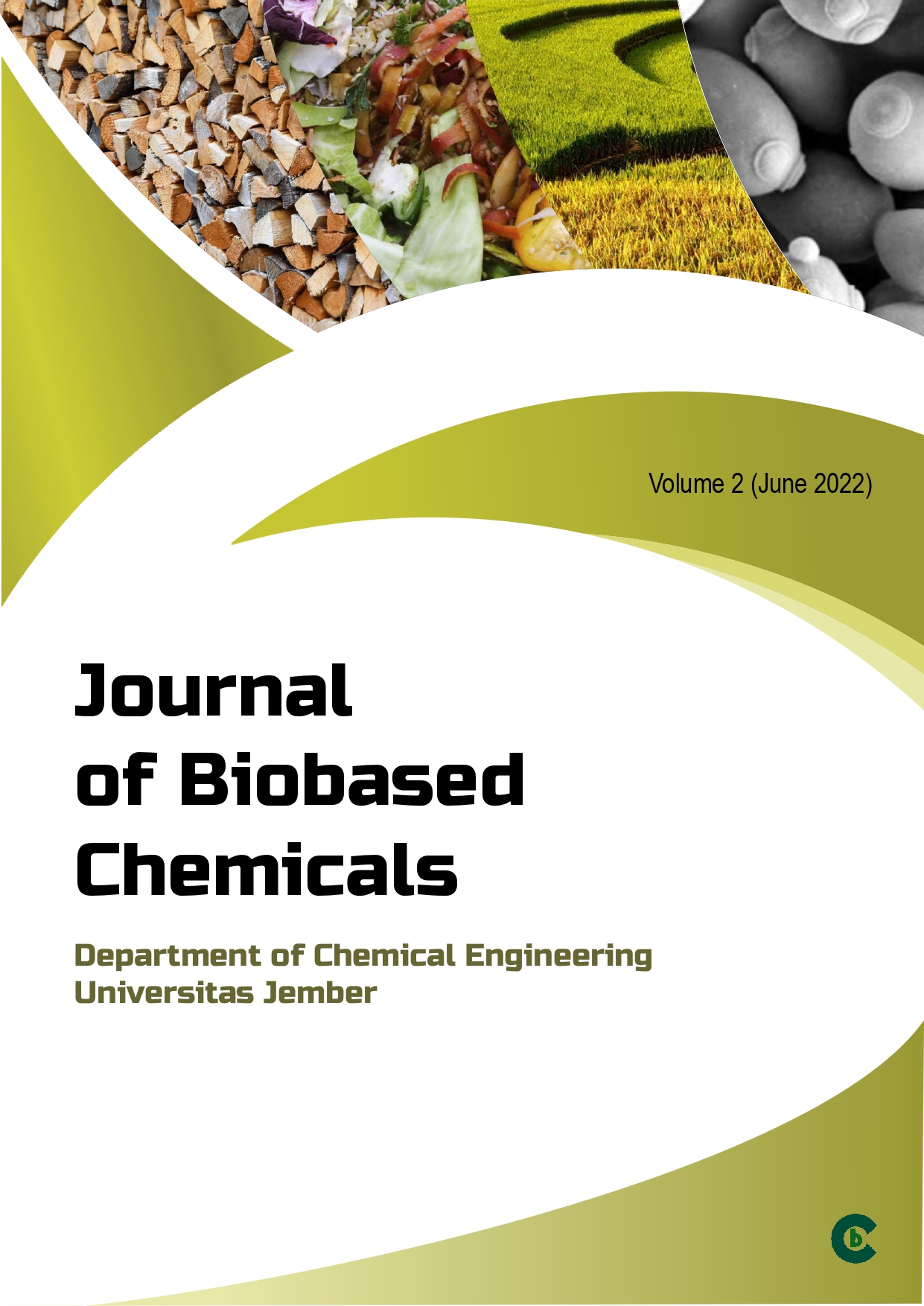Essential Oil Extraction from Citronella (Cymbopogon nardus (L.)) Using Solvent Free Microwave Extraction Method (SFME)
DOI:
https://doi.org/10.19184/jobc.v2i1.120Keywords:
Extraction, Lemongrass, Microwave, GC-MS (Gas Chromatography-Mass Spectrometry)Abstract
Indonesia is one of the producing countries essential oils, essential oils are also a commodity that can generate foreign exchange for the country. Therefore, essential oils receive special attention from the Indonesian government. Indonesia generate 40-50 types of plants that produce essential oils and are traded in the world. Extraction using a microwave with the basic mechanism of microwave heating involves stirring polar molecules or ions that oscillate due to the influence of electric and magnetic fields called dipolar polarization. From the results of physical analysis, it can be seen that citronella essential oil obtained using the Solvent Free Microwave Extraction (SFME) method has met the standards and quality of citronella oil based on SNI 06-3953-1995, according to the parameters of color, specific gravity, and solubility in water. 80% ethanol shows citronella oil with good quality. The results of GC-MS (Gas Chromatography-Mass Spectrometry) analysis on the extraction of citronella essential oil using the Solvent Free Microwave Extraction (SFME) method obtained 2 components, namely citronella and geraniol, with citronellal percentages of 8.64% and 7.53%. Optimal operating conditions for the extraction of essential oils from citronella raw materials using the Solvent Free Microwave Extraction (SFME) method.








